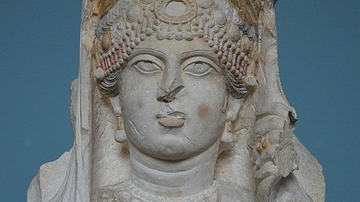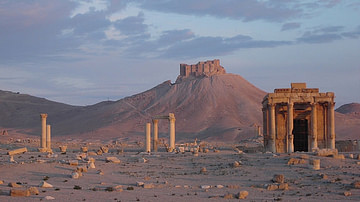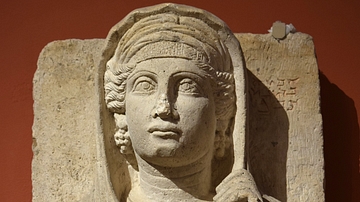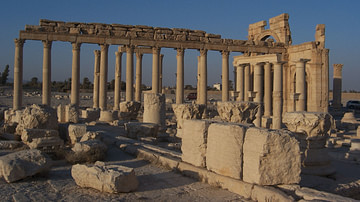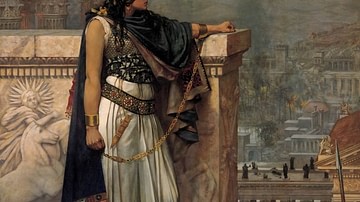Illustration
View of Palmyra with the Temple of Bel, Syria.
Palmyra (Aramaic: ܬܕܡܘܪܬܐ;Hebrew: תדמור; tiḏmor, Greek: Παλμύρα, Arabic: تدمر; Tadmur, /ˌpælˈmaɪərə/) was an ancient city in central Syria. In antiquity, it was an important city located in an oasis 215 km northeast of Damascus and 180 km southwest of the Euphrates at Deir ez-Zor. It had long been a vital caravan stop for travellers crossing the Syrian desert and was known as the Bride of the Desert. The earliest documented reference to the city by its Semitic name Tadmor, Tadmur or Tudmur (which means "the town that repels" in Amorite and "the indomitable town" in Aramaic) is recorded in Babylonian tablets found in Mari.
The most striking building in Palmyra is the huge temple of Ba'al, considered "the most important religious building of the first century AD in the Middle East". It originated as a Hellenistic temple, of which only fragments of stones survive. The central shrine (cella) was added in the early 1st century AD, followed by a large double colonnaded portico in Corinthian style. The west portico and the entrance (propylaeum) date from the 2nd century. The temple measures 205 x 210 m.
External Links
Cite This Work
APA Style
Gagnon, B. (2012, December 19). Palmyra. World History Encyclopedia. Retrieved from https://www.worldhistory.org/image/992/palmyra/
Chicago Style
Gagnon, Bernard. "Palmyra." World History Encyclopedia. Last modified December 19, 2012. https://www.worldhistory.org/image/992/palmyra/.
MLA Style
Gagnon, Bernard. "Palmyra." World History Encyclopedia. World History Encyclopedia, 19 Dec 2012. Web. 14 Apr 2025.


